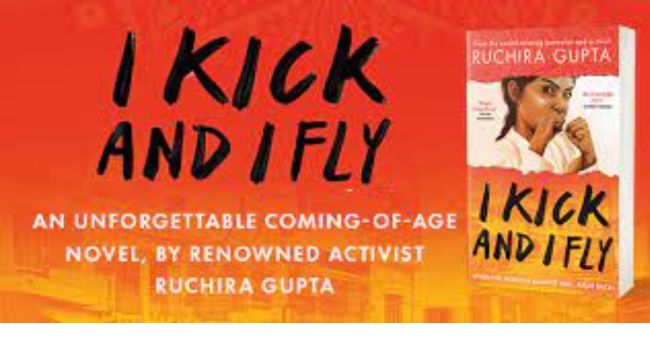The book opens up on the outskirts of the homes of sex workers on the outskirts of a town in Bihar. An unforgettable story based on real events about finding the courage to create your own destiny.
A recent movie in Bengali highlighted the plight of young girls in the Sundarbans and showed how a devious nexus of Indians and foreigners operate from the region known for maneater tigers, fishermen and honey collectors. The movie also highlighted the difficulties cops face in their efforts to checkmate such trade.
There are no latest figures for girl trafficking, it is estimated by various Indian and international agencies that nearly two million women and girls are trafficked for sex into red light areas. Every year, approximately 15,000 girls are illegally traded. In Mumbai’s Kamathipura, bulk of the girls are from Bengal, Jharkhand and Bangladesh. And they have been trafficked at regular intervals by middlemen backed by politicians.
Journalist turned activist Ruchira Gupta has carved a niche for herself in exposing such sex rackets, her latest book, I Kick and I Fly, digs deep into this vicious cycle of trapping and prostitution that exists throughout South Asia. Gupta is the founder of Apne Aap, a NGO that has helped women exit prostitution for sustainable lives. She has now fictionalised the remarkable and life-giving account of a girl’s liberation from the clutches of the middlemen. Heera, the narrator-protagonist, is a poor girl from the Nat community — traditional entertainers — from Bihar, the book beautifully explains her danger and how she, like a female Kung Fu expert, smashes her opponents and gains freedom.
Once again, let me remind everyone, girl trafficking is a very dangerous profession and a lot of cash is spent by middlemen during their operations. They focus on gullible girls from schools and colleges, and give them cold drinks laced with sedatives before taking them away from their homes, schools or colleges. The rest is just a horrible routine.
The book opens up in the outskirts of the homes of sex workers on the outskirts of a town in Bihar. It is here Heera, 14, is actually living on borrowed time. Imagine her plight: Her father has sold her to the sex traders so that he can pick up some decent cash to feed the family, repay his dues with interest. When Heera protested, she was told by her father that girls in her community invariably end up in brothels and no one has ever protested. I could relate to Heera’s plight. In Mumbai’s Kamathipura, I was told a 15-year-old had collapsed in a room where she was locked after she was drugged and put on a train to India from Bangladesh. Cops in the area did not react because it was not an unusual sight for the police personnel stationed at Nagpada neighbourhood. After all, sex workers from Kamathipura routinely visit the police station to lodge complaints against their clients. Eventually, the cops – pushed by an activist – went to rescue the girl and found she was kept without food for four days. She lived in a village close to Jessore, a bustling city in Bangladesh, known for its factories and located 50 km away from India’s Petrapole border in West Bengal.
Let me return to Gupta’s brilliant book. Heera, who had learnt kung fu with the other girls at a hostel, is clear that she is not to be exploited for her body. She knows her body is not to be commodified and preyed upon. And then, she embarks on a journey to locate her missing friend Rosy, a pen pal from faraway US opens up some doors. I Kick and I Fly shows how girls from disempowered communities are thrown to the wolves. They eventually end up dancing as entertainment in carnivals, low wage restaurant labour, work in shady massage parlours. And the road eventually ends up in prostitution.
Gupta says she is shocked when she hears people blaming the communities for saying they sell their daughters. But, argues Gupta in her book, that no one wants to understand the continuum of abuse behind these so-called choices. The world has changed, claims Gupta, saying brokers and middlemen have now gone modern and started using AI to recruit, they even groom teenagers online. You need to buy the book and read it to understand how AI processes data at jet set speed. Cops and anti-trafficking activists try hard to bust such sex rings but lack financial resources. Gupta reminds us that the sex industry is a cash-rich body. Probably it is because of this very prowess the book explains why children account for one in every three detected victims of trafficking worldwide. And when it comes to India, the figure rises to one in two. The book highlights reasons why minor girls in the age bracket 15-18 years are more vulnerable to trafficking. These young girls are in greater demand for the sex trade industry. The book highlights why the situation is grim in India, which doesn’t have a composite anti-trafficking law that addresses prevention, protection, rehabilitation and compensation of survivors. There are, however, separate regulations that address different crimes related to trafficking.
A tough subject, a great read.

